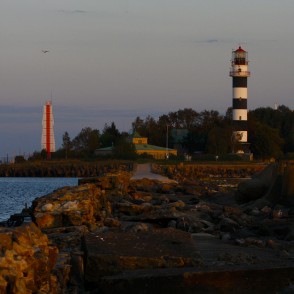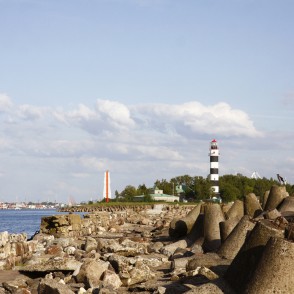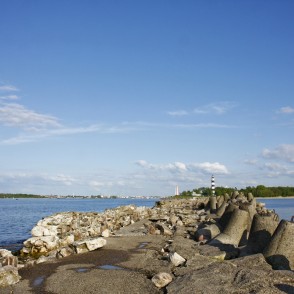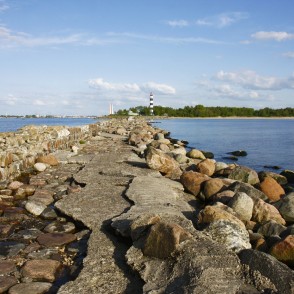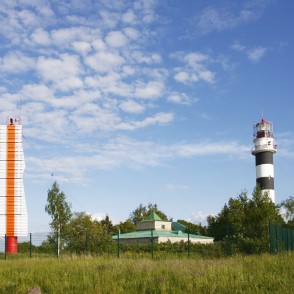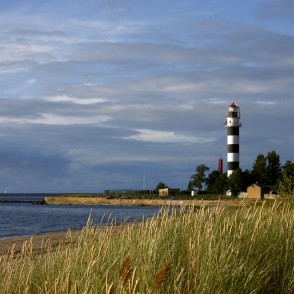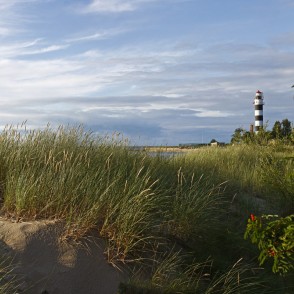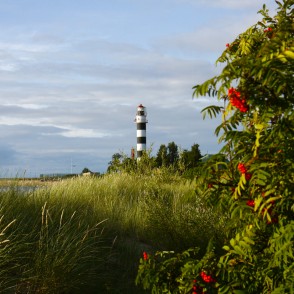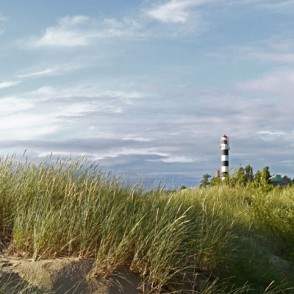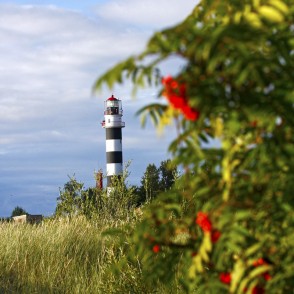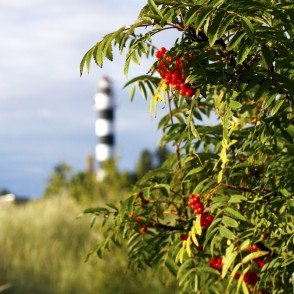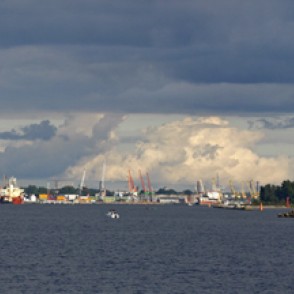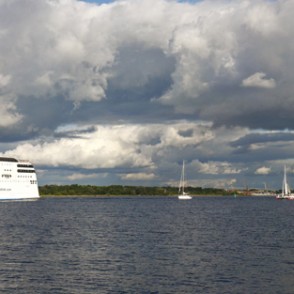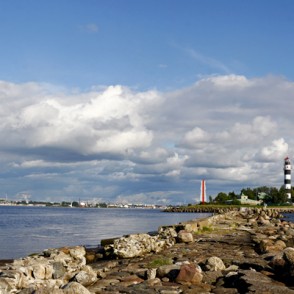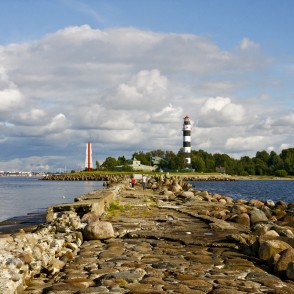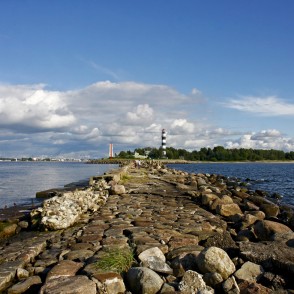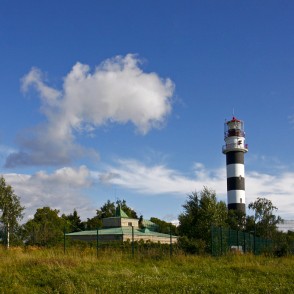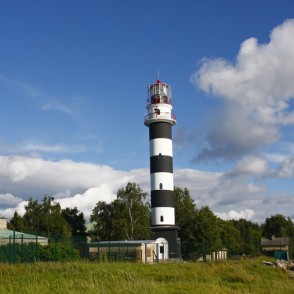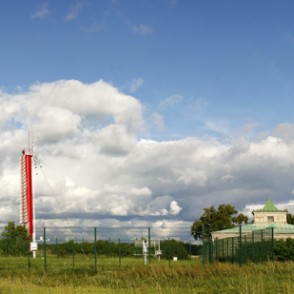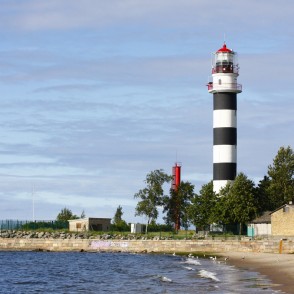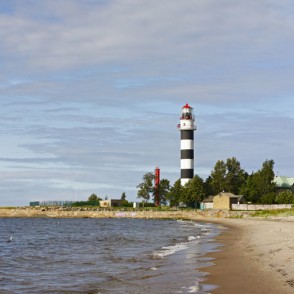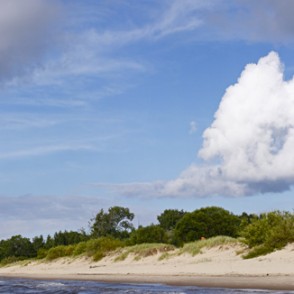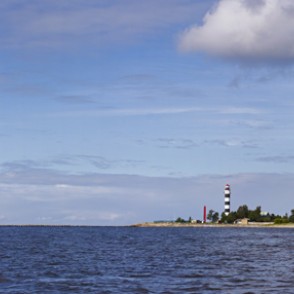The lighthouse at Daugavgriva is one of the best known Latvia’s lighthouses. Its location is a common point of various historical events. The fast-changing stream of the Daugava River runs nearby. Owing to these circumstances, several towers of the Daugavgrīva lighthouse have been built, destroyed, and rebuilt again over the course of history. The first lighthouse was constructed by Swedes at the turn of the 18th century, right where the present-day mouth of the Daugava River is. Back then it was a stone layer with watch-fires at the top. The next lighthouse was a wooden tower on the masonry foundation. But it was demolished during the Crimean War in 1854, and instead, cannons were put on the masonry foundation for firing at the ships of the British Royal Navy. Then, a fundamental cast-iron lighthouse was erected in 1863. It stood till World War I, when it was blown up by the Russian military troops as they retreated eastward from Riga. The same fate befell the lighthouse made of the reinforced concrete, which was built in 1921 during Latvia’s period of independence. This time it was exploded by the German troops as they retreated from Riga in the opposite direction – westward. After the war, a temporary 20 m tall wooden tower of the lighthouse was constructed, but was devastated again by a powerful storm in autumn 1956. But soon enough, a new reinforced-concrete Daugavgrīva lighthouse, painted with black-and-white horizontal stripes, began to send its light on February 2, 1957, and broadcasts its signals up to the present day. Enjoy the view from the lighthouse, after climbing a spiral staircase of one hundred and fifty steps inside the tower, overlooking the Daugava River, its mouth, the Port of Riga, and Riga skyline.
bakas.lv/en
Daugavgrīva Lighthouse (Latvian: Daugavgrīvas bāka) is a lighthouse located in Daugavgrīva on the Bay of Riga on the Latvian coast of the Baltic Sea. The lighthouse was built in 1956, located next to Daugava River. Due to the change in the river's course, several lighthouses have been built, destroyed, and rebuilt again over the course of history.
History
The first lighthouse was constructed by Swedes at the turn of the 18th century, right where the present-day mouth of the Daugava River is flowing, into the Baltic Sea. Back then it was a stone layer with a signal fire on the top of the lighthouse. The next lighthouse was a wooden tower on a masonry foundation, which was demolished during the Crimean War in 1854, and instead, cannons were put on the masonry foundation for firing at ships of the British Royal Navy. Then, a fundamental cast-iron lighthouse was constructed in 1863. It stood until World War I, when the lighthouse was blown up by Russian military troops, who retreated to the east from Riga. The successor to the lighthouse was built in 1921 out of reinforced concrete, during Latvia’s period of independence in the Interwar Period. When the German infantry retreated westward towards the end of the Second World War. After World War II a temporary 20-metre lighthouse as built out of a wooden structure, but the lighthouse was devastated after a powerful storm. The current lighthouse was built between 1956 and 1957; with the first light glare shone on February 2, 1957. Currently the lighthouse is open for the public, with the top viewing gallery being accessed by one hundred and fifty spiral steps.
| Daugavgrīva Lighthouse | |
| Location | Daugavgrīva, Latvia |
| Year first constructed | 1721 (first) 1819 (second) 1863 (third) 1921 (fourth) |
| Year first lit | 1957 (current) |
| Construction | concrete tower |
| Tower shape | cylindrical tower with balcony and lantern |
| Markings / pattern | white with black horizontal bands, red roof lantern |
| Tower height | 115 feet (35 m) |
| Focal height | 121 feet (37 m) |
| Range | 18 nautical miles (33 km; 21 mi) |

